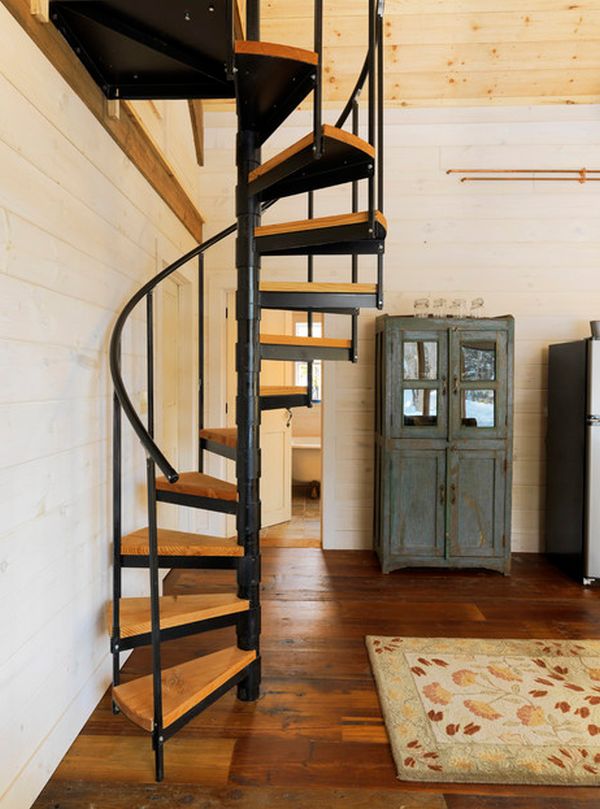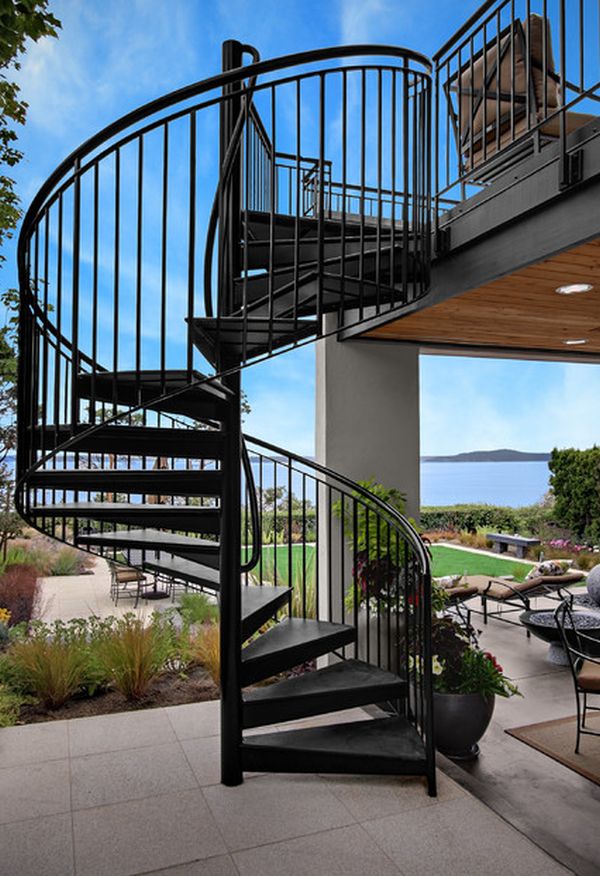What You Need To Know About Spiral Staircases
Since mediaeval times, spiral staircase designs have been used in churches and castles and, for many, they represent a masterpiece of construction methods. Where homes suffer from limited floor space, spiral staircases provide a solution that modern architects use regularly. By comparison with a conventional flight of stairs, which need lots of space space and which can cut out light flow, a staircase based on a spiral design takes up less room and can be relatively open. Despite their long history, spiral staircases suit modern living designs and look set to stay.
Open Plan Living Spaces.

Contemporary designers, that favor open plan homes, have a problem if the space needs a staircase. If a straight stair well is added to any room then part of the floor space is necessarily cut off, with ‘dead space’ left over beneath it. The continuous eye line of a room can be lost. Worst of all, the staircase can cause shadow. This can really compromise an interior design. However, a spiral staircase, with open steps and a balustrade that can be seen through, takes up less floor space and allows light to pass. Any shadow cast by an open spiral staircase will be much less than a regular flight of stairs.
Exteriors And Fire Safety.

Spiral staircases are also often used by architects for exteriors for similar reasons that they specify them for open plan interior designs. A spiral staircase can be much less obtrusive than a regular staircase and, as with interiors, will cast less shadow. Sometimes, designers would prefer not to add a staircase at all to an exterior, but fire safety regulations mean that a second exit is required. In such cases a spiral staircase can be the most attractive resolution, combining functionality with aesthetics. If you have to install a fire exit, opt for a spiral staircase.
Wonderful Wood.

Spiral staircase kits, that are most often made from cast metals and which slot together, are available from a number of manufacturers. However, they do not suit all applications, since spiral staircases are so commonly found in homes with an awkward available shape for stairs or a limited space to install them. If your budget will run to it, a bespoke staircase, constructed by a carpenter or a joiner, in wood will make a real design feature for your home. A skilled woodworker will be able to work in even the tightest spaces to create something to look at as well as walk up.
Mezzanine Floors.

In homes where you want to create more floor space without extending the property, the addition of a mezzanine floor can be the best way to achieve it. In such cases, being able to access the newly created area can be a headache. A spiral staircase is the obvious way forward, since it takes up the minimum space at both the mezzanine level and the ground.
Modern Cellar Design.

Nowadays homes with cellars are more popular than ever. Even if you don’t have an extensive collection of wine, a cellar that can be accessed easily from your kitchen, is highly desirable. However, a steep flight of stairs running down from a kitchen is not ideal. Modern designers tend to opt for a spiral staircase design to provide access to a cellar storage space. By using a transparent hatch cover, the staircase remains an integral part of the kitchen’s design, without getting in the way.
The Central Feature.


Space saving is a great reason to consider installing a spiral staircase. However, even if you have great deal of space to work in a spiral staircase can be a preferred option. Make a feature of your spiral by extending the radius in to a grand sweep rather than a tight turn. Making the amount of turn irregular can be a good idea, too. As most spiral staircases will follow a bespoke design, if used as a central feature, you can experiment with different curves. Why not consider an S-shape? A larger room will allow you to design a less steep staircase, which will make it more user friendly and easier to ascend.
